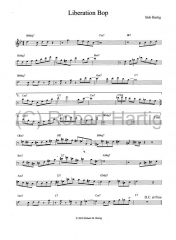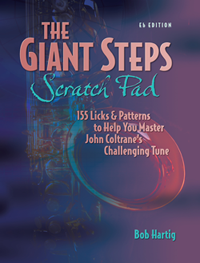Okay, all you bebop saxophonists and assorted jazz instrumentalists, here’s a little something to have some fun with. Next time you want to work over “Cherokee,” try this instead. It’s a contrafact I wrote over the “Cherokee” changes–quite a few years ago, in fact; it’s copyrighted 2010 only because that’s when I finally got around to charting it with transcription software so it looks nice and pretty. Just click on the image, print it out, and you’re good to go.
It’s a good, strong melody, so I’m accompanying it with this statement:
1) You may use “Liberation Bop” on the gig.
2) You may NOT use “Liberation Bop” for any other commercial purposes, such as but not limited to recordings or written music collections, without my express consent. If you want to use it for commercial purposes, click the tab that says “contact” and shoot me a request.
In other words, keep it honest. And that being said, I hope you’ll enjoy the tune.
PS–I didn’t intend for the watermark to be that freaking big. But I don’t think it’ll interfere, so I’m leaving it as, at least for now.




